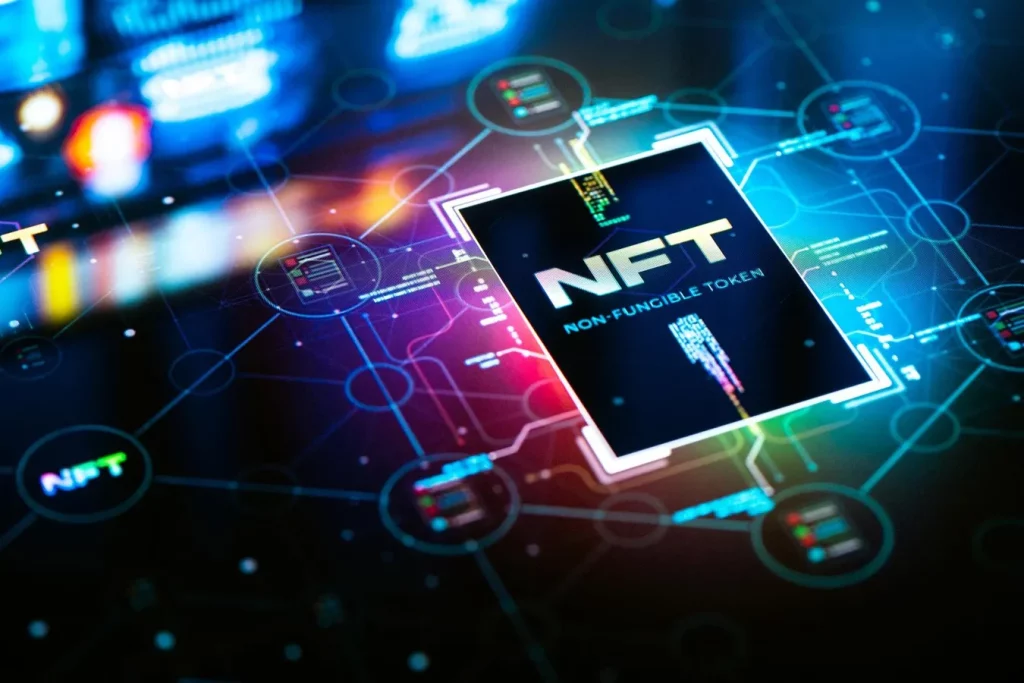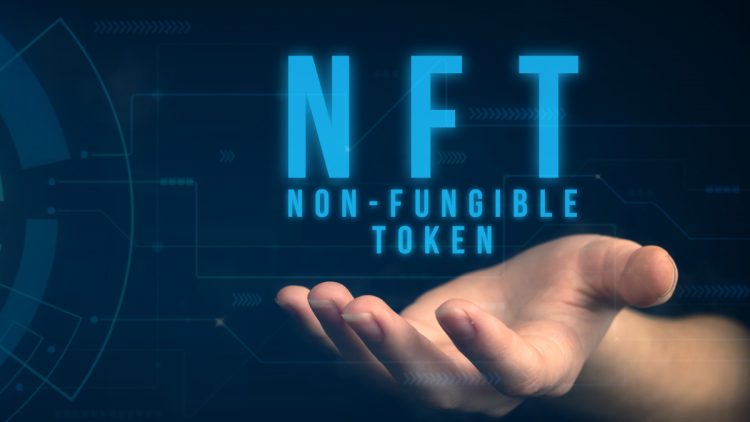The Non-Fungible Token (NFT) market has seen explosive growth over the past few years, redefining how digital ownership and value are perceived. NFTs, which represent unique digital assets authenticated through blockchain technology, have taken the world by storm, particularly in sectors such as art, gaming, collectibles, and virtual real estate. As the technology matures, a variety of emerging trends are beginning to shape the future trajectory of the NFT market. This article explores these key trends, providing insights into how they will affect the market’s growth and evolution.
1. Introduction: The Evolution of NFTs
NFTs are unique digital assets that exist on a blockchain, with the most common platform being Ethereum. Unlike cryptocurrencies such as Bitcoin or Ethereum, NFTs are indivisible and unique. They can represent ownership of virtually anything — from digital art, music, and video clips, to in-game items, virtual real estate, and even tweets. NFTs have garnered the attention of artists, investors, tech enthusiasts, and mainstream brands, driven by the need for scarcity and unique ownership in the digital world.
The rapid rise of NFTs in the past two years has introduced a new paradigm in digital asset ownership, opening up new avenues for creators, consumers, and investors alike. However, with this rapid growth comes new trends, challenges, and opportunities that are shaping the future of NFTs.
2. Key Emerging Trends in the NFT Market
As the NFT market continues to expand, several trends are starting to take shape, each influencing the future of this digital asset class. These trends span various industries, from gaming to art and virtual worlds, and will have significant implications for NFT adoption, use cases, and value creation.
2.1. Increased Institutional and Brand Adoption
While NFTs initially attracted the attention of artists and early adopters in the crypto community, mainstream institutions and brands have started to recognize their potential. Leading companies, sports teams, and entertainment giants are now using NFTs to enhance consumer engagement and create new revenue streams.
- Luxury Brands and Fashion: Fashion houses like Gucci, Louis Vuitton, and Prada are venturing into the NFT space, launching digital collections and virtual fashion items that can be worn in the metaverse or used to enhance one’s online persona. Brands are leveraging NFTs to engage with younger, digital-native audiences who are increasingly spending time in virtual environments.
- Sports and Entertainment: The sports industry is one of the fastest-growing adopters of NFTs, with platforms like NBA Top Shot and Soccer Manager offering fans the chance to own rare moments or player highlights. Additionally, NFTs are being used to sell virtual merchandise and provide fans with exclusive experiences, such as access to private events or special content.
- Art and Collectibles: Major art galleries and auction houses, such as Christie’s and Sotheby’s, are now actively participating in NFT auctions. The sale of digital art as NFTs has transformed the art market, providing artists with a new way to monetize their work and engage with a global audience.
This increasing institutional involvement signals that NFTs are no longer just a niche market but are poised for wider mainstream adoption.
2.2. NFTs and the Metaverse: The Future of Virtual Worlds
The rise of the metaverse — a collective, virtual shared space that merges the physical and digital worlds — is one of the most exciting developments in the NFT ecosystem. The metaverse is essentially an interconnected universe of digital spaces where users can interact, socialize, and engage in economic activities.
NFTs are becoming the primary asset class within the metaverse. In this virtual world, users can buy, sell, and trade digital assets, including virtual land, avatars, clothing, and other items. Key platforms such as Decentraland, The Sandbox, and Somnium Space have made significant strides in creating digital environments where users can engage in various activities, from attending virtual concerts to building and selling digital real estate.
NFTs serve as the foundation for ownership in these virtual worlds. They enable users to prove ownership of virtual land or digital items, creating a new form of digital economy. As the metaverse continues to develop, the demand for NFTs representing virtual assets is expected to increase, giving rise to new business models and opportunities for creators and investors.
2.3. Interoperability and Cross-Platform Integration
One of the most promising trends in the NFT space is interoperability — the ability for NFTs to be used across multiple platforms and virtual worlds. Today, NFTs are often confined to specific ecosystems (e.g., NFTs purchased on OpenSea may only be used within that marketplace or the Ethereum network). However, interoperability could allow NFTs to be seamlessly transferred and utilized across different platforms and virtual worlds, increasing their value and utility.
For example, a digital artwork or in-game asset purchased in Axie Infinity might be usable in Decentraland or The Sandbox, and vice versa. This creates a more fluid and interconnected digital economy, where users can move assets freely between different digital environments.
Interoperability is still in its infancy, but it represents a huge opportunity for NFT projects to collaborate and expand the potential for NFTs as truly cross-platform digital assets.
2.4. Fractional Ownership and Democratization of High-Value NFTs
One of the barriers to NFT adoption, particularly for high-value assets, is their cost. Many high-profile NFTs, such as digital art or rare collectibles, are priced in the millions of dollars, making them inaccessible to the average investor. However, the concept of fractional ownership is addressing this challenge.
Fractional ownership allows multiple users to collectively own a share of a high-value NFT. Through tokenization, an NFT can be divided into fractions that represent ownership stakes. This model democratizes access to high-value NFTs and allows a broader pool of investors to participate in the market.
Platforms like DAO (Decentralized Autonomous Organizations) and Fractional.art are already facilitating the fractionalization of NFTs, allowing users to pool resources and collectively own rare digital assets. This trend is expected to gain traction as more investors look for ways to diversify their portfolios and share the risks and rewards of NFT ownership.
2.5. Environmental Impact and Sustainable NFTs
NFTs, particularly those built on the Ethereum blockchain, have faced criticism due to their environmental impact. The Proof of Work (PoW) consensus mechanism used by Ethereum requires vast amounts of computational power, resulting in high energy consumption and a significant carbon footprint.
In response, there is growing interest in environmentally sustainable NFTs. The transition to Ethereum 2.0 — which adopts a Proof of Stake (PoS) mechanism — is expected to dramatically reduce the blockchain’s energy consumption. Additionally, other blockchains such as Tezos, Flow, and Polygon have been gaining attention for their eco-friendly consensus mechanisms, providing an alternative for creators and collectors who are concerned about the environmental impact of NFTs.
As sustainability becomes an increasingly important factor for consumers and investors, NFTs will need to address these concerns through more energy-efficient platforms and transparent environmental practices.
2.6. NFTs as Utility Tokens: Beyond Collectibles
While NFTs have primarily been associated with digital art and collectibles, they are evolving into utility tokens — digital assets that provide access to specific products, services, or privileges. NFTs can serve as more than just proof of ownership; they can grant holders exclusive access to content, experiences, or communities.
For example:
- Concerts and Events: Artists and performers are issuing NFT tickets that provide holders with access to exclusive concerts, live-streamed events, or even VIP meet-and-greets.
- Gaming and Virtual Goods: NFTs can be used to unlock special in-game assets, skins, or even abilities that enhance the gaming experience. Game developers are increasingly integrating NFTs into their games to allow players to truly own their in-game assets.
- Membership and Community Access: Certain NFT collections, such as Bored Ape Yacht Club or World of Women, grant holders access to private communities and exclusive events. As these communities grow, the value of NFTs as a status symbol or membership card is likely to increase.
As NFTs expand into these new use cases, they are poised to become integral parts of the digital economy, offering more utility and value beyond traditional art and collectibles.

3. Challenges and Considerations for the Future of NFTs
While the trends outlined above present promising opportunities, there are also several challenges and considerations that will impact the future development of the NFT market:
3.1. Legal and Regulatory Uncertainty
As NFTs grow in popularity, they attract increasing scrutiny from regulators worldwide. Issues related to intellectual property rights, taxation, and money laundering are among the concerns being addressed by policymakers. Additionally, as NFTs become more integrated into the financial ecosystem, there is a need for clearer regulations around their classification, ownership, and trade.
3.2. Intellectual Property and Ownership Issues
NFTs have raised significant questions about ownership rights, particularly concerning digital art. While owning an NFT may prove ownership of the digital asset, it doesn’t necessarily confer the copyright or the ability to reproduce the content. As the NFT market matures, clearer guidelines around intellectual property and copyright will be needed.
3.3. Market Volatility and Speculation
The NFT market is still highly speculative, with prices for many NFTs subject to intense volatility. This can lead to concerns about the sustainability of the market and whether the recent boom is just a bubble. As NFTs become more mainstream, the market will likely mature, but price fluctuations and speculative behavior will remain an ongoing challenge.
4. Conclusion: The Future of NFTs
As the NFT market continues to evolve, emerging trends are shaping its future in profound ways. Increased institutional adoption, the rise of the metaverse, and the development of interoperable and sustainable NFT ecosystems are all driving forces behind this transformation.
However, challenges related to regulatory uncertainty, environmental concerns, and intellectual property need to be addressed to ensure the long-term viability of NFTs.
Looking ahead, NFTs are poised to redefine ownership and value in the digital world. Whether they are used as art, collectibles, or utility tokens, NFTs will continue to unlock new opportunities for creators, consumers, and investors alike. The future of NFTs is bright, but it is clear that the journey is just beginning.

















































